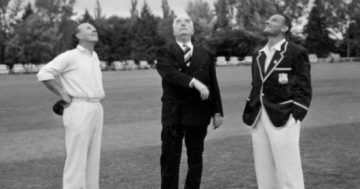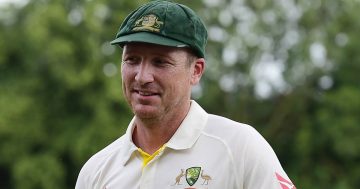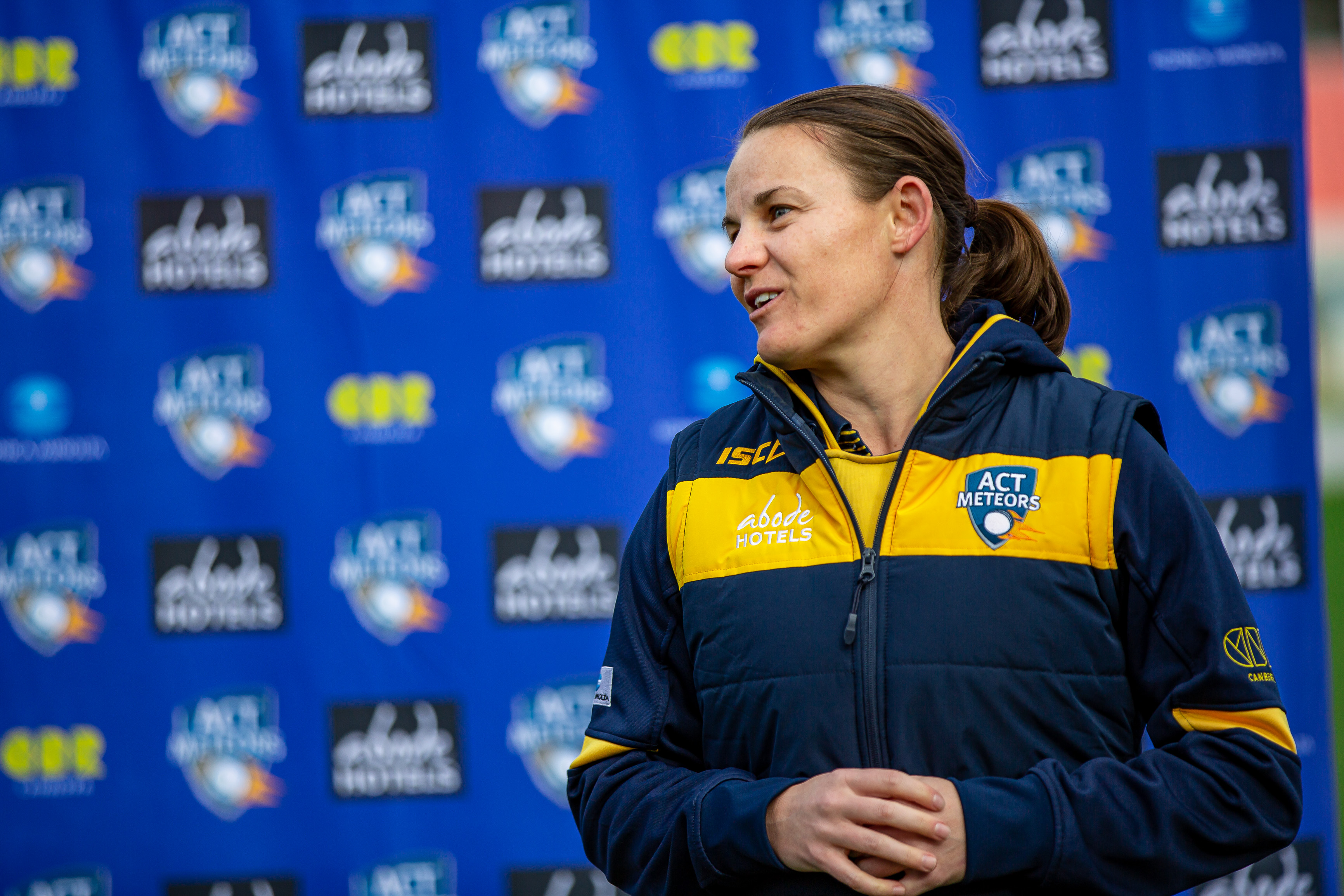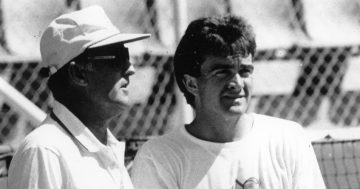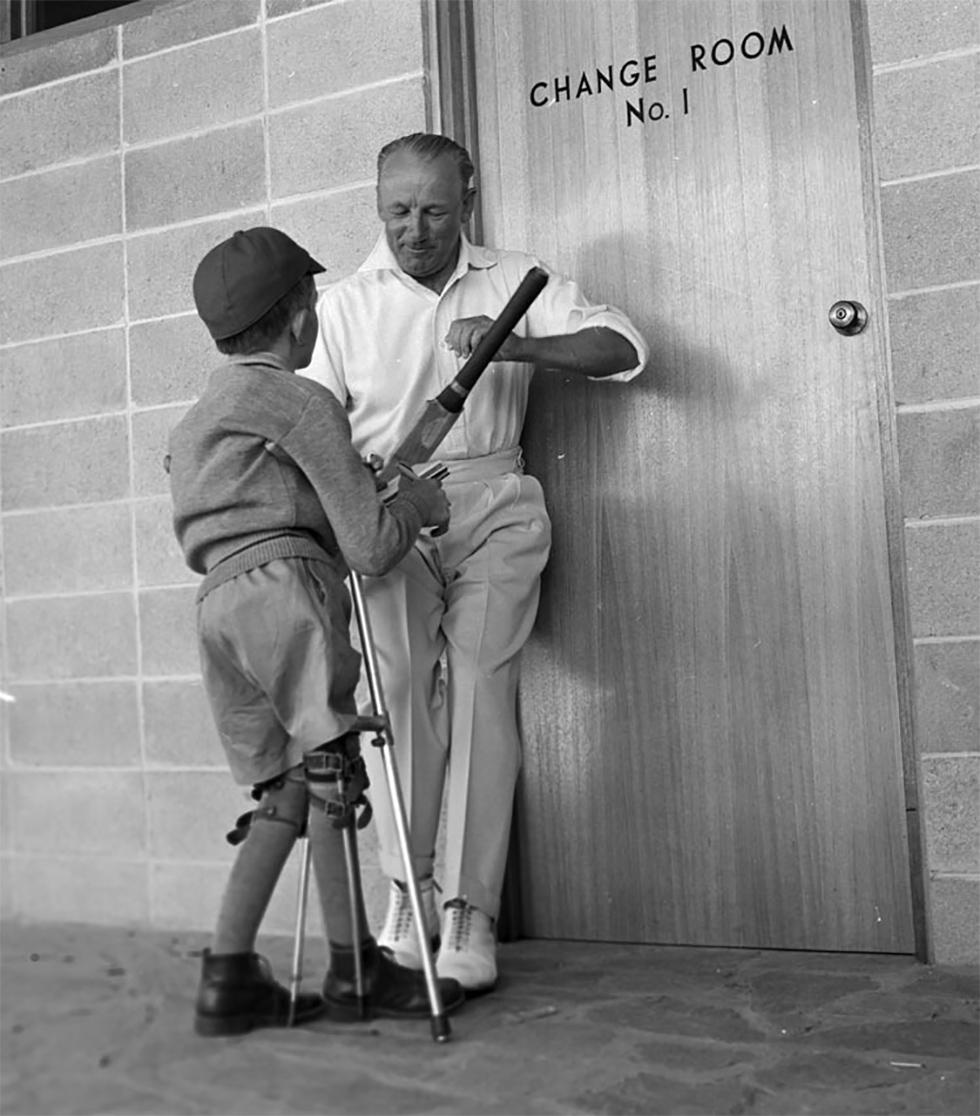
Sir Donald Bradman autographing a bat for Rick Scheeren at the Prime Minister’s XI in 1963. Photo: National Archives of Australia.
In 1922, seeking to shake off the stain of World War I, Canberrans sought to develop recreational activities.
And even before King O’Malley had driven in the first survey pegs commencing construction of the new capital city, cricket emerged as the first of these activities to take root.
Host of the 100 Years of Cricket ACT podcast Robbie Mackinlay says it was unsurprising, given the nation’s British connection.
“I’d imagine during the war, because of our close alliance with Britain fighting on the western front, cricket would have been a popular topic,” he says.
“After the war, they were trying to resume normal life, looking at ways of taking their minds off what many people had been through.”
At a landmark meeting on 13 September 1922, the Federal Territory Cricket Association (FTCA) was formed. It was the basis of what would become the ACT’s first sporting organisation to reach its centenary – Cricket ACT.
The Territory’s entire population fell well shy of 3000 at the time. Most club grounds, with their ant bed pitches, were simply open land in the vicinity of a settlement or construction camp. There were no dressing rooms, toilets or facilities to wash or shower in, although sometimes cubicles were towed in by horses.
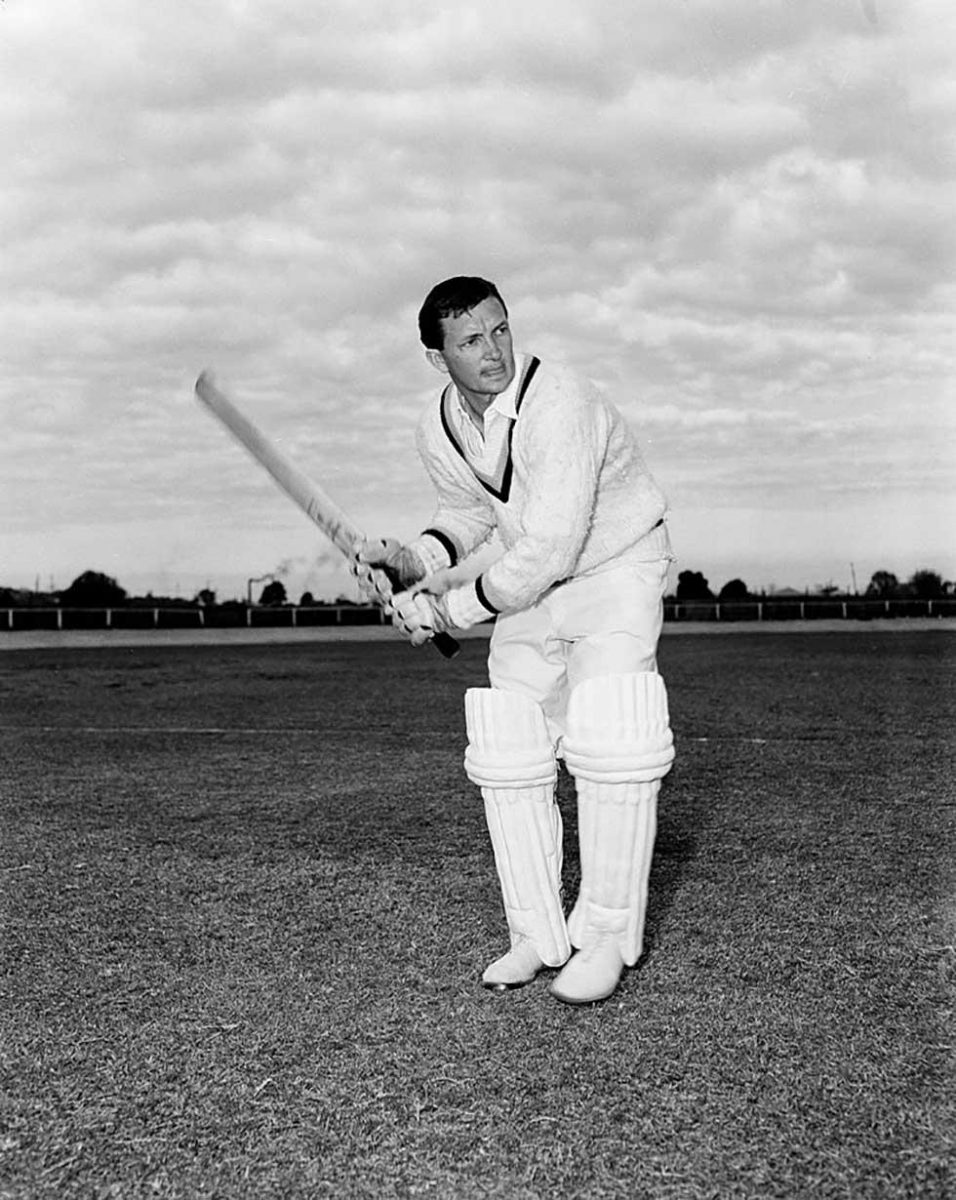
Richie Benaud as captured by photographer John Tanner. Photo: National Archives of Australia.
As covered in Robbie’s six-part podcast combing through 100 years of the highs and lows in ACT cricket, it was a far cry from the sport today.
“The podcast tells the story of 100 years of striving to get recognition and acceptance,” he says.
“That’s the message that comes through – there are significant setbacks and major wins, and through it all, Cricket ACT was constantly battling its way to the next step and the one after that.
“The final frontier would be to gain full first-class playing status from Cricket Australia. They’ve proven they have the talent and emerging talent coming through; they have the facilities and the population. Everything is in place. They just need a shot now.”
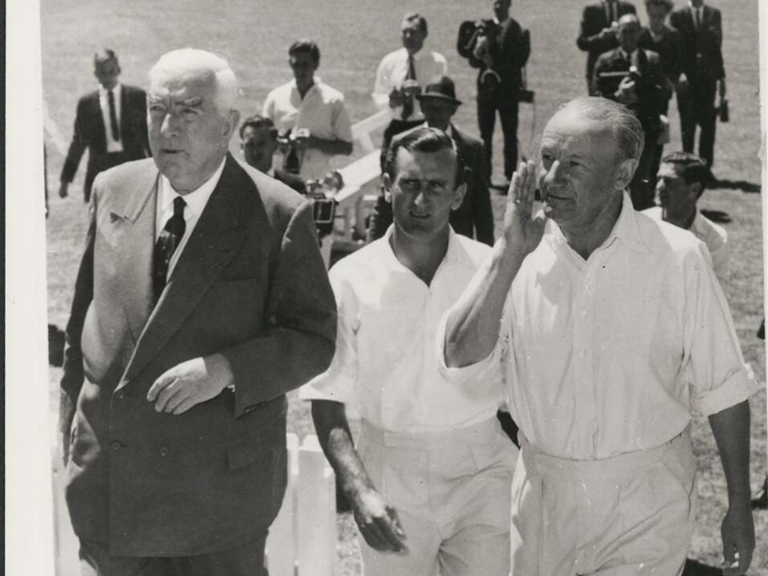
Sir Robert Menzies with cricketers Ted Dexter and Sir Donald Bradman at Manuka Oval. Photo: NLA.
The podcast looks at major milestones over the century, including cricket’s suspension and painstaking resurrection in the ACT following World War II, in which four ACT cricketers lost their lives.
“Restarting after the war was, in many ways, much harder than founding it in the first place,” Robbie says.
“Efforts were hampered by shortages of materials, fuel and equipment like rollers to prepare wickets. And people’s lives were shattered.”
The podcast is punctuated by the various incarnations of the FTCA, including its renaming to Federal Capital Territory Cricket Association when Parliament was moved from Melbourne to Canberra in 1927 and, eventually, Cricket ACT.
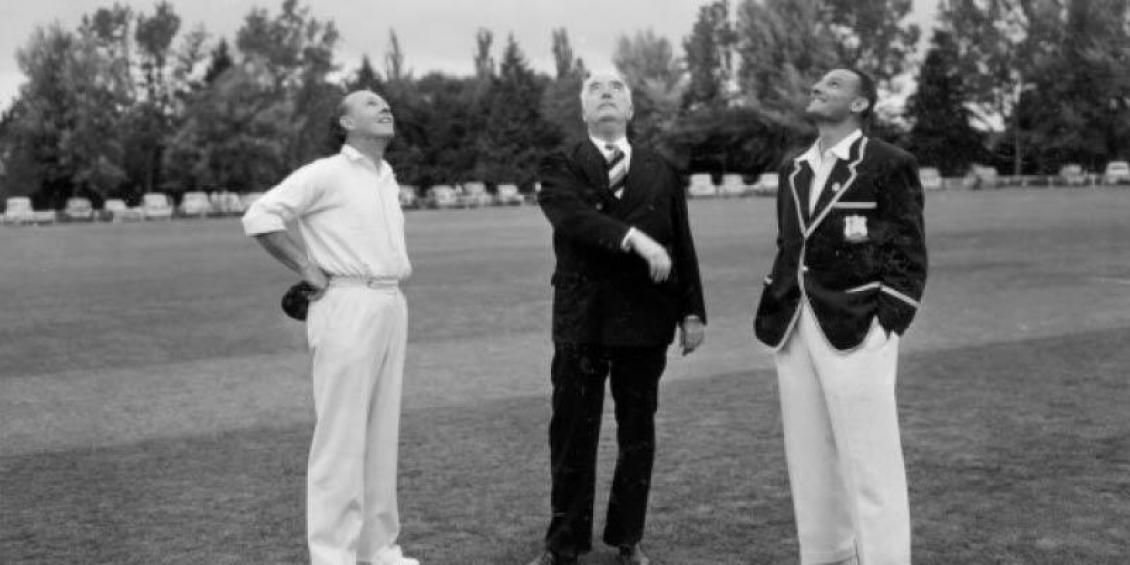
PM’s XI captain Jack Fingleton, Prime Minister Menzies and West Indian captain John D Goddard toss the coin at the 1951 Prime Minister’s XI Cricket Match. Photo: Department of Prime Minister and Cabinet. (Courtesy ACT Heritage Library.)
It’s brimming with firsts – the first representative, international, Sheffield Sheild, First Class and World Cup matches played in the ACT and the first ACT players to ascend to various heights.
It revisits highlights, like the return of the Prime Minister’s XI series under Bob Hawke and lows, such as the Canberra Comets’ unexpected removal from the Mercantile Mutual Cup.
Throughout, listeners also discover the story of another star in the ACT’s cricket history – Manuka Oval. Highlights include Sir Donald Bradman’s last ever match in the PM’s XI 1963 match, the 1983 arrival of the famed Jack Fingleton Scoreboard and the long-awaited installation of lights in 2013.
“Manuka Oval was created to become the showpiece of cricket in Canberra and remained central throughout the story,” Robbie says.
“It gradually became bigger and better to attract good cricket content to the Nation’s Capital, and today the ground and wicket are in first class, bowling green condition.”
Following a century-long rollercoaster, cricket in the ACT is most certainly on an upward trend, according to Cricket CEO Olivia Thornton.
“Reaching our centenary is a wonderful milestone. The fact we’ve been able to sustain cricket here for more than 100 years is undoubtedly off the back of a strong volunteer base – they’re the lifeblood of our sport,” she says.
“Cricket in the ACT is full of the passionate and committed people who’ve all played their part, small or big, to ensure our game stayed healthy through the highs and lows.”
Cricket ACT is marking the occasion with a gala on 4 February at the National Museum.

Big Bash is returning to Manuka Oval. Photo: Cricket ACT.
“We get one shot at celebrating a centenary, so we’re putting on all the bells and whistles,” Olivia says.
“We have some very special guests attending and will announce the two ‘teams of the century’ on the night – one male and one female. So many people have contributed to our history, so picking 11 or 12 people from a century’s worth of data was quite a task.
“This is a wonderful opportunity to bring people together to celebrate those who have shaped our game over the first hundred years. We’re lucky to be the first cab off the rank in terms of sporting organisation to do so, and we hope our wider community will come out strong to mark this moment in history.”
For more information on Cricket ACT’s Centenary Gala, visit the Cricket ACT website.












